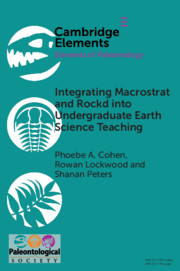Element contents
Integrating Macrostrat and Rockd into Undergraduate Earth Science Teaching
Published online by Cambridge University Press: 20 October 2018
Summary
- Type
- Element
- Information
- Series: Elements of PaleontologyOnline ISBN: 9781108681445Publisher: Cambridge University PressPrint publication: 29 November 2018
References
- 22
- Cited by

